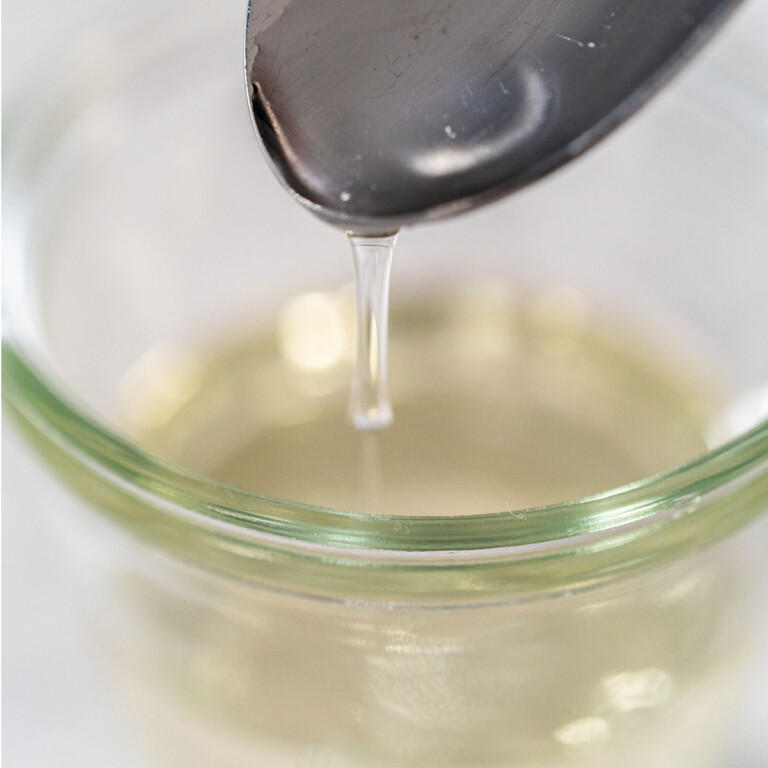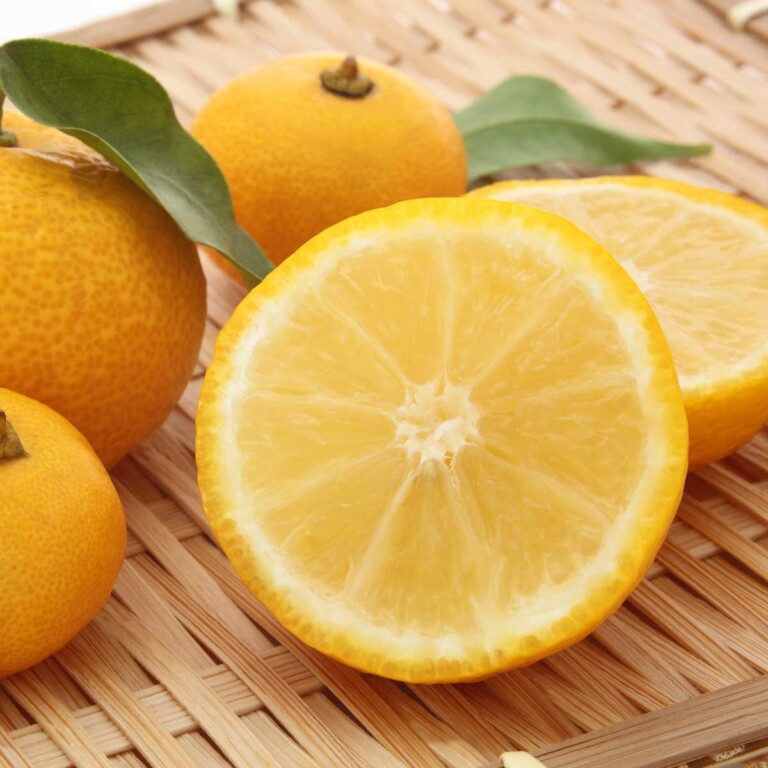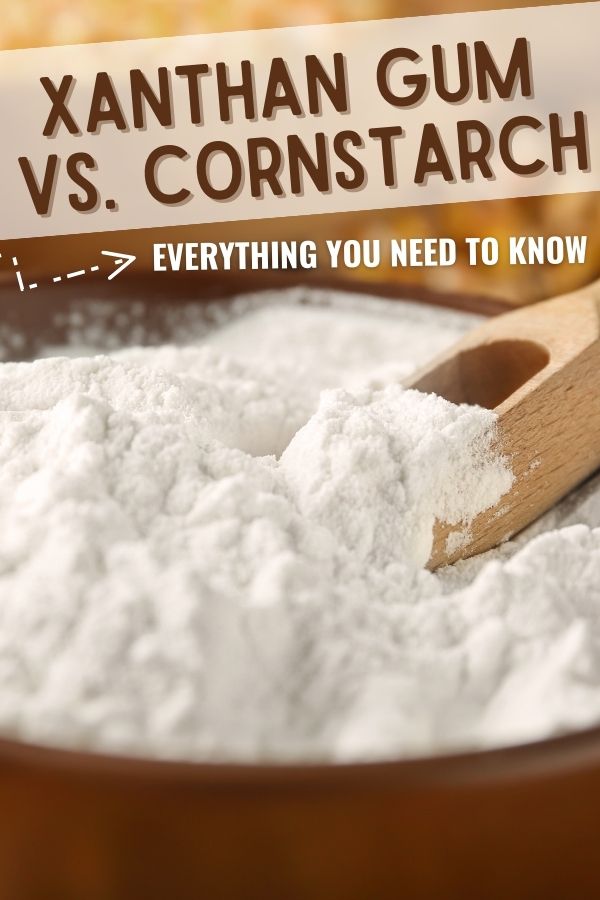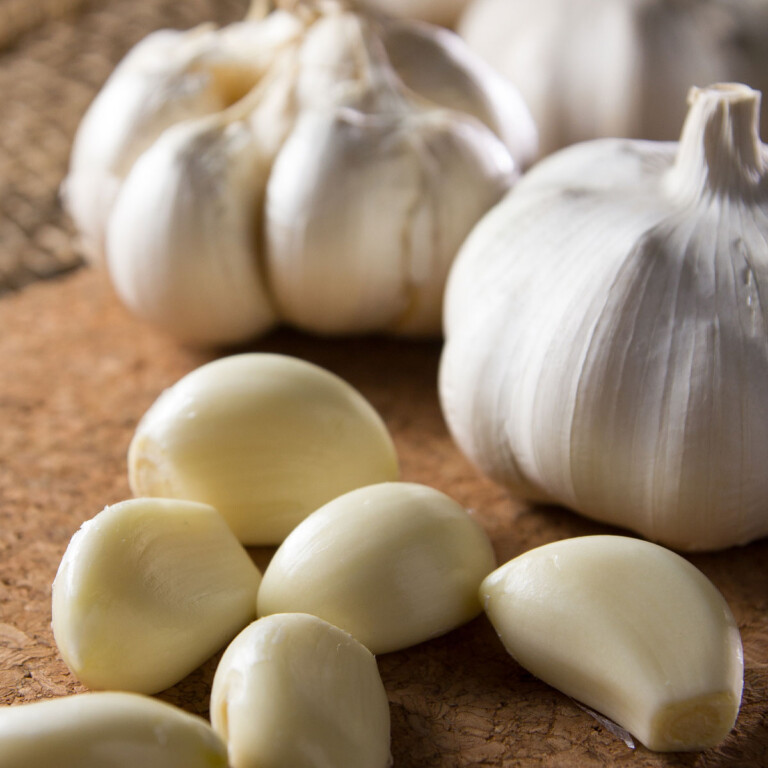Buckwheat Honey Vs Manuka Honey (Side-by-side Comparison)
This post may contain affiliate links. If you make purchase after clicking a link, I may receive a commission at no extra cost to you.
Last Updated on September 11, 2023
If you enjoy adding raw honey to your diet, then you might already be familiar with the different types of honey. Let’s take a look at buckwheat honey vs manuka honey and see how they differ in terms of health benefits and taste.
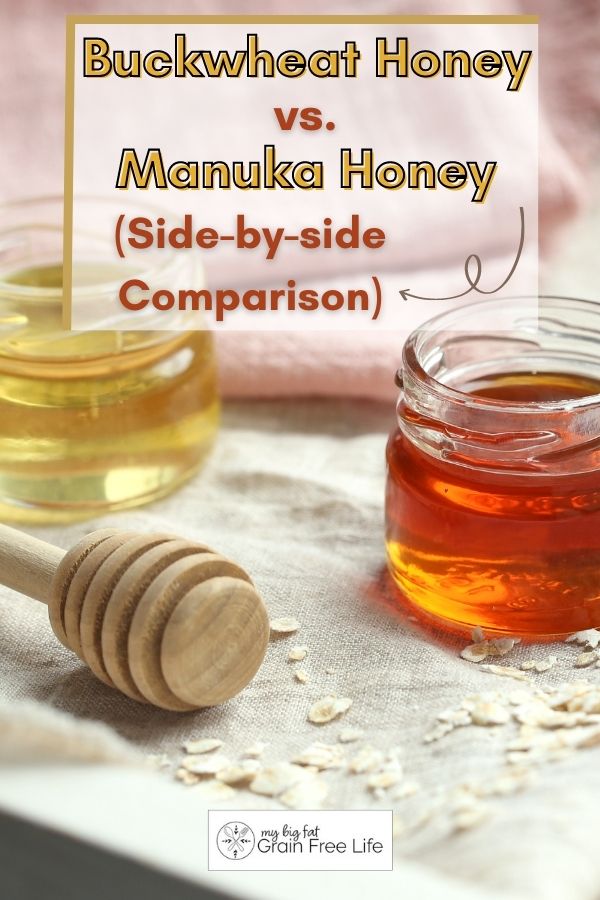
Buckwheat Honey Vs Manuka Honey
The difference between buckwheat honey vs manuka honey may seem small. However, both types of honey are made by bees pollinating different types of plants, and the health benefits you enjoy from eating the honey vary.
Like maple syrup, raw honey is used as a natural sweetener, and both are beneficial to your health when comsumed in moderation. Many choose to use honey as a healthier sweetener for coffee.
Buckwheat Honey
Raw buckwheat honey is a dark honey that’s produced by bees pollinating the buckwheat plant. Buckwheat is a pseudo grain that is often planted as a cover crop and is also used to produce buckwheat flour.
What is Buckwheat Honey?
Buckwheat honey is the kind of honey that comes from the nectar of tiny buckwheat flowers. The honey tends to be more costly than most popular honey varieties like clover honey since it’s more difficult for the bees to collect enough nectar from the tiny flowers.

What Does Buckwheat Honey Taste Like?
Buckwheat honey is a dark-colored honey with a molasses-like taste and an earthy flavor. The darker honey is not as sweet as traditional honey.
Health Benefits of Buckwheat Honey
If you’re wondering what are the health benefits of buckwheat honey, then you’ve come to the right place. Raw honey from the buckwheat plant has many benefits including antibacterial activity and anti-inflammatory properties. It may also reduce cholesterol levels in your blood which reduces your risk of heart disease.
We’ll cover the health benefits of buckwheat honey more in depth below.
Manuka Honey
Manuka honey is a variety of honey with higher antibacterial properties than most kinds of honey. It’s made by bees collecting nectar from the manuka bush, or New Zealand teatree. This bush is a type of flowering plant that’s native to New Zealand and south-east Australia.
What is Manuka Honey?
Manuka honey is made by honey bees in Australia and New Zealand that collect the nectar from the native plant leptospermum scoprium bush. The honey maintains its antibacterial properties even after the hydrogen peroxide in the honey has disappeared.
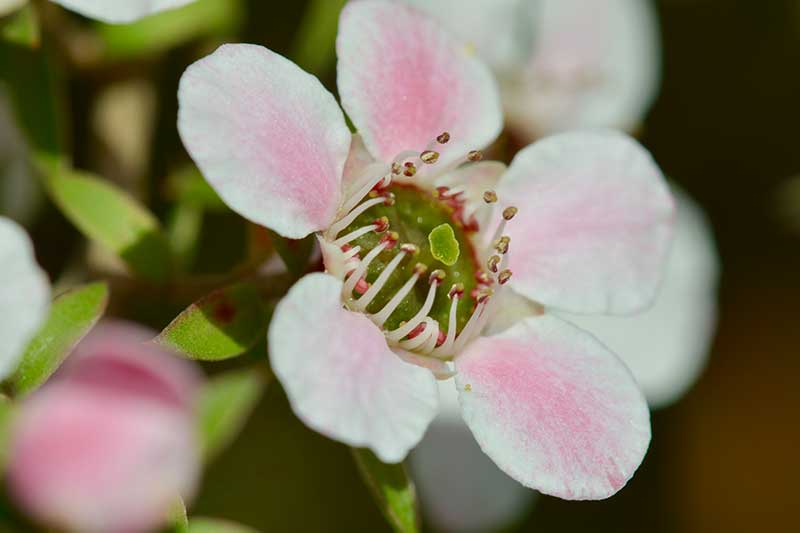
What Does Manuka Honey Taste Like?
Manuka honey has a bold flavor with a sweet, rich caramel taste and a bittersweet finish.
Manuka Grading
The honey from the manuka bush has three grading systems that help buyers determine the antibacterial properties, quality, and potency of the honey. In all three systems, the higher the number the better as it will have a stronger anti-bacterial activity.
The three types of grading systems are:
MGO – MGO measures the methylglyoxal which allows the honey type to keep its antibacterial properties long after regular table honey loses its.
UMF – UMF stands for the Unique Manuka Factor Honey Association and considers the amount of leptosperum, DHA, and MGO in the honey.
NPA – NPA stands for the non-peroxide activity of the honey.
Health Benefits of Manuka Honey
If you are wondering what are the health benefits of manuka honey, then keep reading. This highly nutritious honey helps to prevent tooth decay, inhibits the growth of bacteria, and aids the healing of wounds.
Buckwheat Honey Vs Manuka Honey Nutritional Comparison
Different types of honey have different benefits and nutritional value. Buckwheat and manuka honey do as well because both types of honey come from different plants.
Buckwheat Honey
Here’s an overview of the nutritional composition for buckwheat honey per 1 tablespoon serving:
- Calories: Approximately 64 calories
- Carbohydrates: Approximately 17 grams
- Total Sugar: Approximately 17 grams (primarily fructose and glucose)
- Fiber: Negligible amount
- Fat: Negligible amount
- Protein: Negligible amount
- Vitamins and Minerals: While buckwheat honey contains trace amounts of vitamins and minerals, the quantities are generally not significant enough to have a substantial impact on daily nutrient intake.
Manuka Honey
Here’s an overview of the nutritional composition for manuka honey per 1 tablespoon serving:
- Calories: Approximately 64 calories
- Carbohydrates: Approximately 17 grams
- Total Sugar: Approximately 16 grams (primarily fructose and glucose)
- Fiber: Negligible amount
- Fat: Negligible amount
- Protein: Negligible amount
- Vitamins and Minerals: While Manuka honey contains trace amounts of vitamins and minerals, the quantities are generally not significant enough to have a substantial impact on daily nutrient intake.

Comparing Buckwheat Honey Vs Manuka Honey
While both buckwheat honey and manuka honey are monofloral honey, they have different nutritional values because different types of flowers are used.
Source of Honey
- Buckwheat Honey: Buckwheat honey comes from the tiny flowers of the buckwheat plant.
- Manuka Honey: Manuka honey comes from the nectar of the manuka bush that’s native to New Zealand and south-east Australia.
Flavor Comparisons
- Buckwheat Honey: Honey connoisseurs enjoy the robust flavor of buckwheat honey which is similar to blackstrap molasses with hints of black cherry and chocolate.
- Manuka Honey: Manuka honey tastes more like caramel with a bittersweet finish.
Color Comparisons
- Buckwheat Honey: The dark colour of buckwheat honey tends to have a reddish tint. The color can range from a dark purple to an extremely dark, almost black.
- Manuka Honey: Manuka honey also has a dark color. It has a golden to dark brown color.
Glycemic Index and Sugar Content
- Buckwheat Honey: Buckwheat has a lower glycemic index score of about 54 which is lower than many other types of honey. This means it won’t raise your blood sugar levels as quickly as other types of honey. A single dose of buckwheat honey has a sugar content of about 17 grams per 1 tablespoon serving.
- Manuka Honey: Manuka honey also has a lower glycemic score than many popular types of honey. It varies between 54 and 59. The sugar content is about 16 grams per 1 tablespoon serving.
Antibacterial Properties
- Buckwheat Honey: Recent clinical studies have shown that buckwheat honey has similar antibacterial properties to manuka honey. It also helps to retard the growth of staphylococcus aureus bacteria.
- Manuka Honey: has unique antibacterial properties that help the honey to heal wounds. It’s also an effective remedy for a sore throat and cough. The antibacterial properties of manuka honey may also help prevent tooth decay and bacterial infections.
Antioxidant Properties
- Buckwheat Honey: The cellular antioxidant level of buckwheat honey is higher than that of manuka honey as it contains powerful antioxidants. If buckwheat honey is added to black tea, it will also raise the level of antioxidant compounds in the body.
- Manuka Honey: Manuka honey has high amounts of phenolic compounds. The high phenolic content helps to boost your immune system and support the health of your gut.
Immune Boosting Properties
- Buckwheat Honey: Buckwheat honey contains minerals like zinc that are important for supporting your immune system and helping to prevent respiratory infections.
- Manuka Honey: The high level of antioxidants in manuka honey also helps to support your immune system and prevent free radicals from attacking your body.
Use for Coughs
- Buckwheat Honey: Buckwheat honey is a natural remedy for sore throats and coughs. Using buckwheat honey to soothe a cough may be more beneficial than using an over the counter cough medicine.
- Manuka Honey: One of the benefits of honey is that it’s a natural remedy for coughs. Manuka honey with its anti-bacterial properties is one of the best honey types to use when you need to soothe a cough.
Wound Healing
- Buckwheat Honey: The antioxidant activity of buckwheat honey helps to improve the healing process of wounds while slowing the growth of dangerous bacteria that cause infections.
- Manuka Honey: Another use of honey from the manuka bush is to treat wounds. It may help the natural process by reducing pain, helping tissue to regrow, maintaining a moist environment, and preventing the growth of bacteria.
Improved Skin Health
- Buckwheat Honey: The high antioxidant content of buckwheat honey makes it a great addition to your skin care routine. It will help to hydrate your skin and may prevent acne. The high level of antioxidants in the honey also helps to remove free radicals that damage the skin.
- Manuka Honey: Manuka honey helps to maintain the moisture content of your skin while the powerful antioxidants in it help to fight the free radicals that age your skin.
Buckwheat Honey Vs Manuka Honey Cost Comparison
- Buckwheat Honey: While buckwheat honey is more expensive than most popular types of honey, it is less expensive than manuka honey as buckwheat is grown in many places around the world including North America.
- Manuka Honey: Manuka honey is more expensive as it comes from nectar from the manuka bush that’s native to New Zealand and south-east Australia.
Manuka Honey vs. Buckwheat Honey – Which Is Better?
Both types of monofloral honey have many benefits. They will retard the growth of bacteria and help wounds to heal. Manuka honey may help to treat stomach ulcers and prevent tooth decay while buckwheat honey may be a better choice to treat a cough than even over-the-counter medication.
The choice of which type of honey ultimately comes down to the type of benefits you wish to receive from the honey.
You might also enjoy: 20 Incredible Health Benefits of Wildflower Honey
Dosage & Precautions
The recommended serving size of manuka and buckwheat honey is one tablespoon for adults and children over the age of one year. To treat children with a cold, give a child between two and five 2.5 ml of honey, a child between six and eleven 5 ml of honey, and a child over the age of twelve 10 ml of honey. The honey can be taken alone or mixed into warm water or tea.
Children under the age of one should not eat honey as it may contain bacteria that are dangerous for the infant. Also, be careful of serving honey to someone who is allergic to bees or bee pollen as they may have an allergic reaction.
Other Types of Honey
There are various types of honey available, each possessing unique characteristics and flavors. Here is a list of different types of honey:
- Buckwheat Honey: This dark-colored honey is derived from the nectar of buckwheat flowers. It has a rich, malty flavor with hints of molasses and is often prized for its antioxidant properties.
- Manuka Honey: Originating from New Zealand, manuka honey is highly regarded for its potent antibacterial properties. It has a strong, distinctive flavor and is often used for medicinal purposes.
- Clover Honey: Derived from the nectar of clover plants, this honey has a sweet and mild flavor. It is one of the most popular types of honey.
- Wildflower Honey: As the name suggests, wildflower honey is made from the nectar of various wildflowers. It has a robust, full-bodied flavor and can vary in color, ranging from light to dark amber.
- Acacia Honey: Known for its light and delicate flavor, acacia honey is pale in color and has a mild, floral taste.
- Eucalyptus Honey: Harvested from eucalyptus trees, this honey has a bold, slightly medicinal flavor. It is commonly used as a natural remedy for respiratory ailments.
- Orange Blossom Honey: With a light citrusy aroma, orange blossom honey is made from the nectar of orange tree blossoms. It has a delicate, fruity flavor that pairs well with teas and desserts.
- Sage Honey: Derived from the nectar of sage plants, this honey has a strong, herbal taste. It is often sought after for its robust flavor and is a popular choice for culinary applications.
- Lavender Honey: Made from the nectar of lavender flowers, this honey boasts a unique floral flavor with subtle hints of lavender. It is widely used in baking and pairs well with cheeses.
- Tupelo Honey: Derived from the white tupelo tree in the southeastern United States, tupelo honey is known for its light golden color and buttery, sweet taste. It is highly prized by honey enthusiasts.
- Linden Honey: This delicately flavored and aromatic type of honey is derived from the nectar of linden tree flowers.
- Alfalfa Honey: Derived from the nectar of alfalfa flowers and known for its subtle sweetness and floral undertones, alfalfa honey is a light, delicate-flavored honey.
- Fireweed Honey: This uniquely fragrant and light-colored honey is derived from the nectar of fireweed flowers and known for its mild, sweet taste and medicinal properties.
- Dandelion Honey: Not made by bees, it’s a flavorful and aromatic natural alternative to traditional honey, made by infusing dandelion flowers in a sweet syrup.
Final Summary
When enjoying any type of honey, such as manuka or buckwheat honey, it’s good to remember that it’s a natural sweetener best enjoyed in moderation. If you have diabetes or need to be mindful of your sugar intake, it’s always a good idea to have a friendly chat with a healthcare professional before adding honey to a daily routine.
Sources
- https://www.healthline.com/health/buckwheat-honey
- https://www.healthline.com/nutrition/manuka-honey-uses-benefits
- https://www.mayoclinic.org/drugs-supplements-honey/art-20363819
- https://www.webmd.com/vitamins/ai/ingredientmono-738/honey
- https://miod.co/buckwheat-or-manuka-which-is-better-for-your-health/
- https://www.kiehls.com/skincare-advice/manuka-honey-skin-benefits.html
- https://www.geesbees.ca/post/honey-for-your-skin
- https://manukora.com/blogs/manukorablog/manuka-honey-s-extraordinary-antioxidant-properties
- https://sklep.apimiodek.pl/en/blog/sweet-relief-understanding-the-glycemic-index-of-honey-for-diabetic-consumption-1680511061.html
- https://manukora.com/blogs/manukorablog/how-to-sustain-healthy-energy-with-manuka-honey-and-the-glycemic-index
- https://www.geesbees.ca/post/is-buckwheat-honey-better-than-manuka-honey
- https://www.hollandandbarrett.com/the-health-hub/food-drink/food/manuka-honey/understanding-manuka-honey-label/
- https://mindfullyhealthyliving.com/buckwheat-honey-vs-manuka-honey/
- https://baltichoneyshop.co.uk/blogs/news/buckwheat-honey-vs-manuka-honey
- https://www.sciencedirect.com/science/article/abs/pii/S0308814618301304
- https://beeswiki.com/buckwheat-honey/
- https://www.webmd.com/a-to-z-guides/manuka-honey-medicinal-uses


